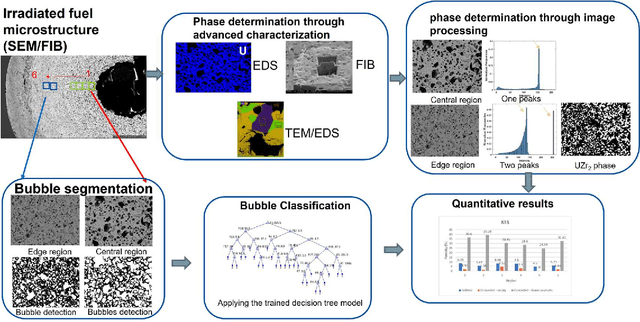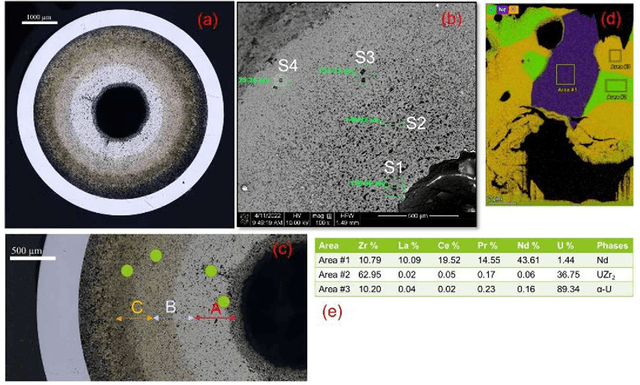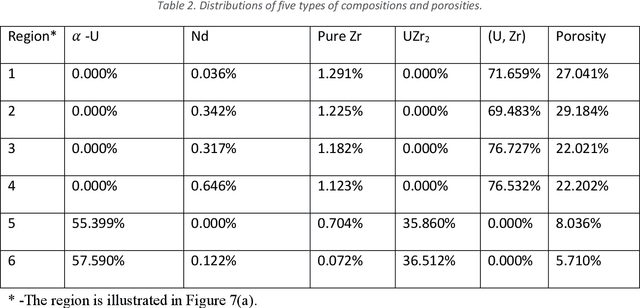Advanced Characterization-Informed Framework and Quantitative Insight to Irradiated Annular U-10Zr Metallic Fuels
Paper and Code
Oct 17, 2022



U-10Zr-based metallic nuclear fuel is a promising fuel candidate for next-generation sodium-cooled fast reactors.The research experience of the Idaho National Laboratory for this type of fuel dates back to the 1960s. Idaho National Laboratory researchers have accumulated a considerable amount of experience and knowledge regarding fuel performance at the engineering scale. The limitation of advanced characterization and lack of proper data analysis tools prevented a mechanistic understanding of fuel microstructure evolution and properties degradation during irradiation. This paper proposed a new workflow, coupled with domain knowledge obtained by advanced post-irradiation examination methods, to provide unprecedented and quantified insights into the fission gas bubbles and pores, and lanthanide distribution in an annular fuel irradiated in the Advanced Test Reactor. In the study, researchers identify and confirm that the Zr-bearing secondary phases exist and generate the quantitative ratios of seven microstructures along the thermal gradient. Moreover, the distributions of fission gas bubbles on two samples of U-10Zr advanced fuels were quantitatively compared. Conclusive findings were obtained and allowed for evaluation of the lanthanide transportation through connected bubbles based on approximately 67,000 fission gas bubbles of the two advanced samples.
 Add to Chrome
Add to Chrome Add to Firefox
Add to Firefox Add to Edge
Add to Edge